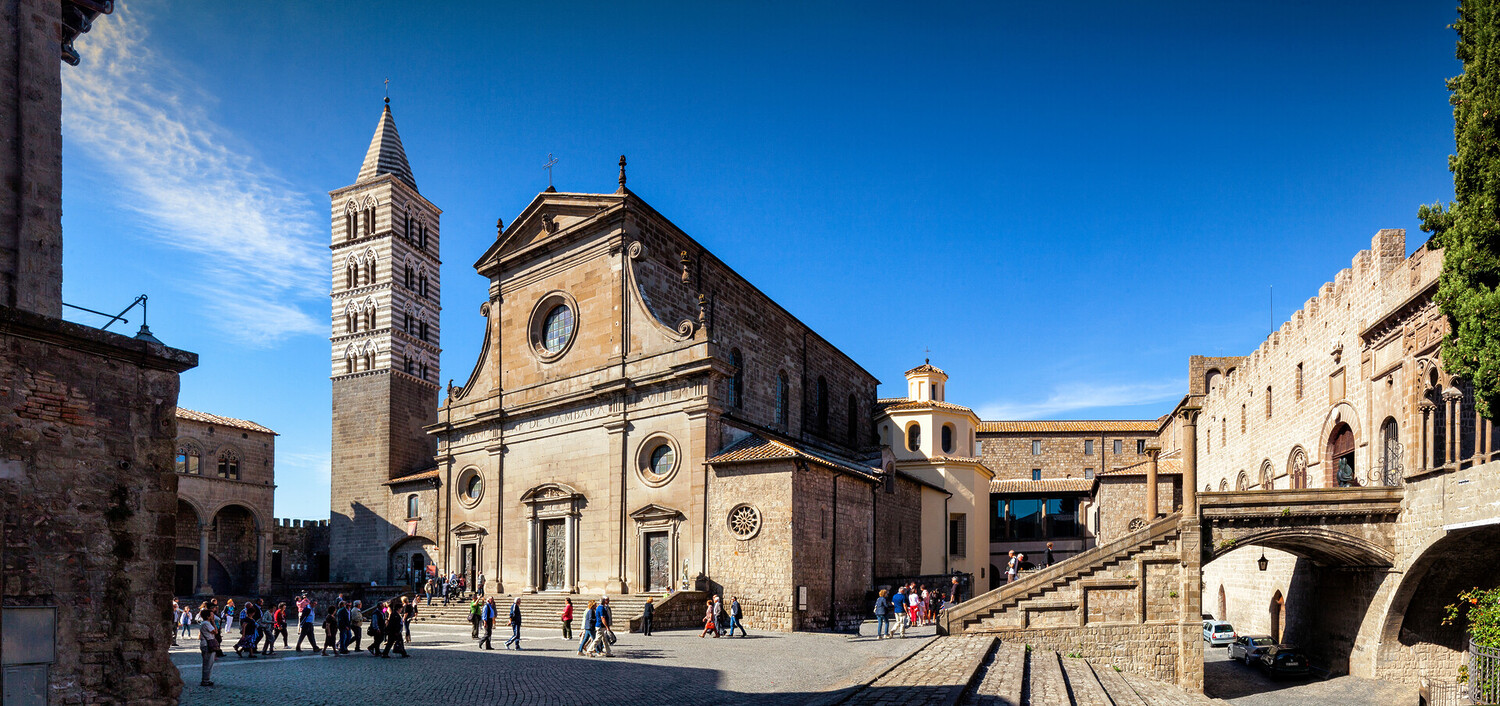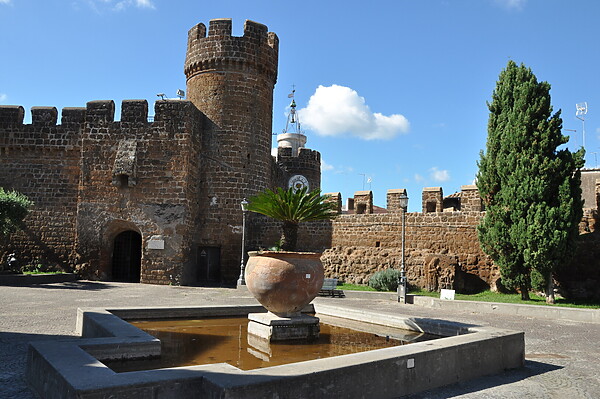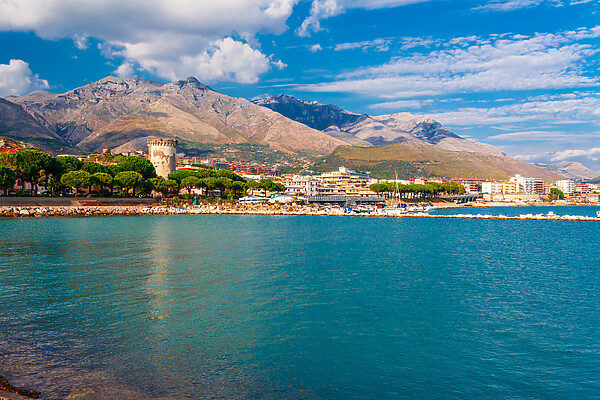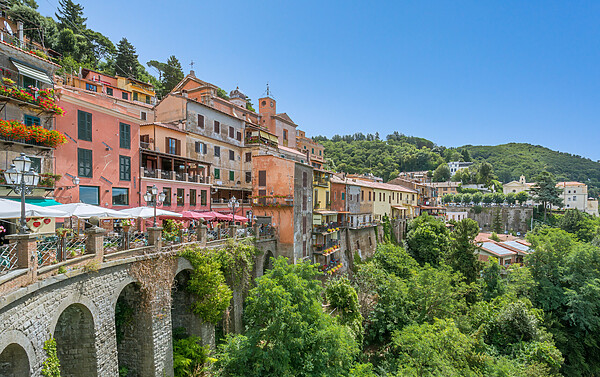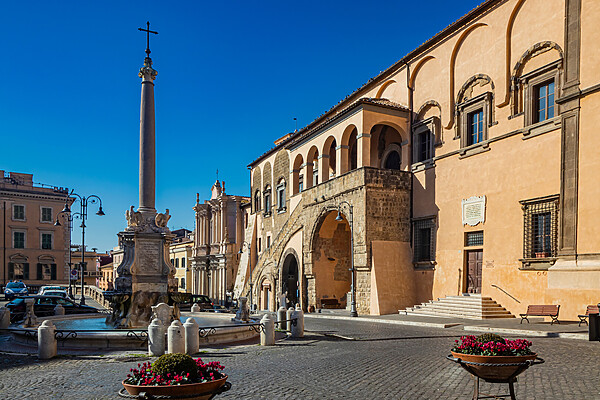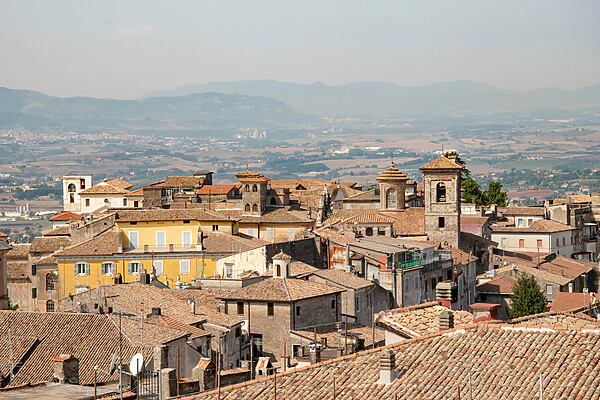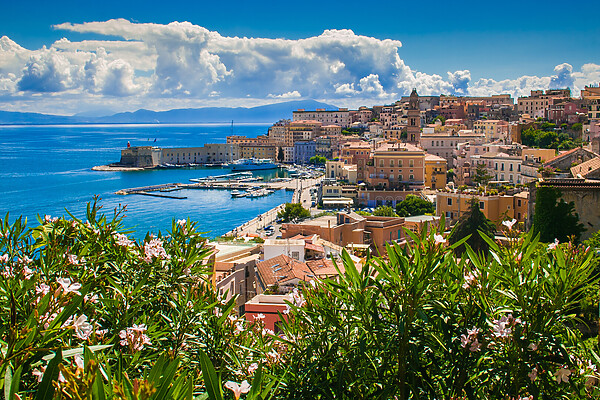Visit Viterbo, nestled in the hills of northern Lazio, this medieval wonder is all about crumbling palaces, steaming thermal waters, and that rich, lived-in feeling only old cities have. It’s not polished like Florence or postcard-perfect like Venice, but that’s exactly the charm. Viterbo invites you to explore at your own pace: stroll under stone archways, dip into ancient baths, chase Etruscan legends, and toast your discoveries with a glass from the nearby Lazio wine tours. It’s raw, it’s real, and it just might be your favorite stop in Italy.
Visit Viterbo and the top things to do
Explore the iconic Palazzo dei Papi di Viterbo
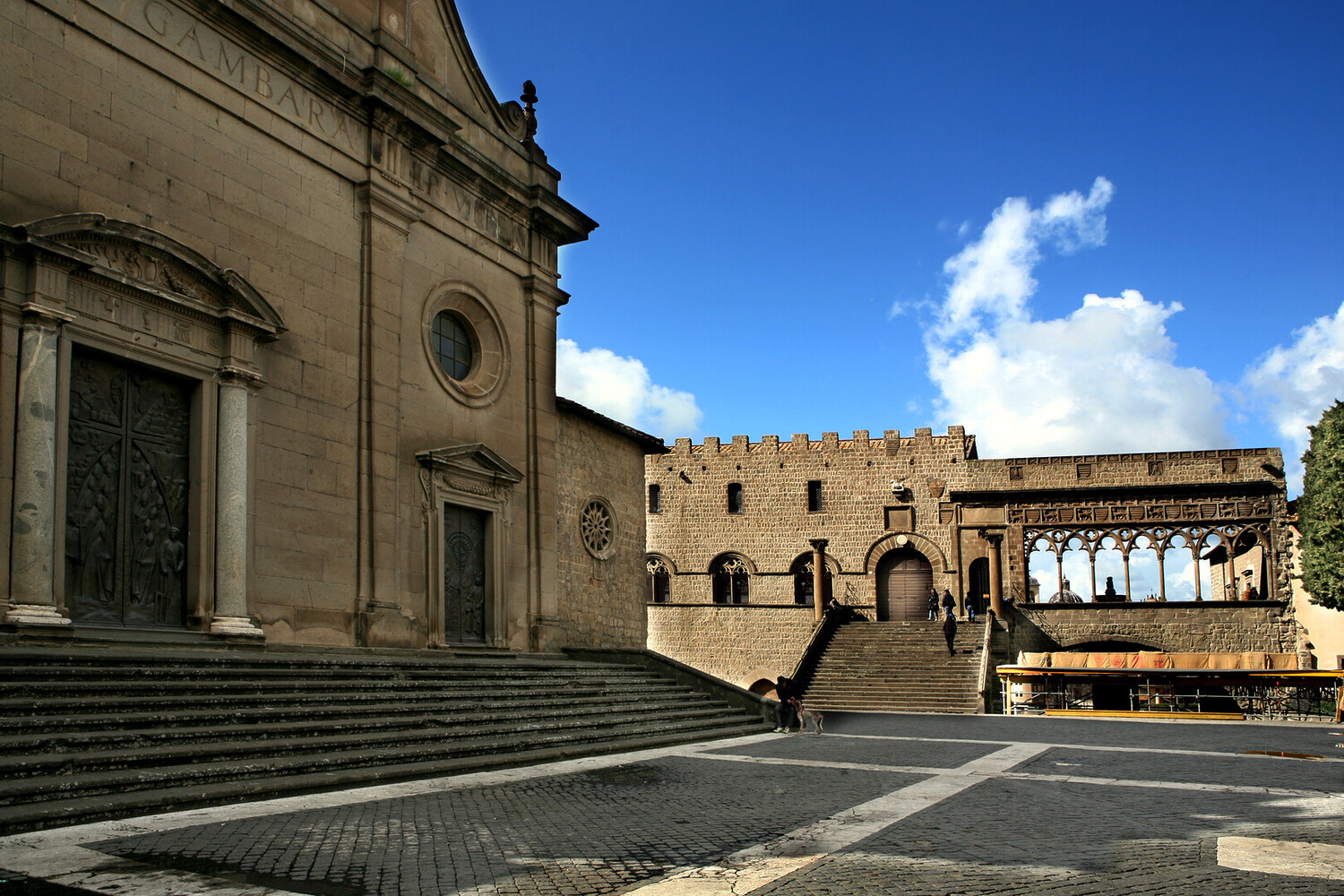
Step into the storybook stone of Palazzo dei Papi, the dramatic centerpiece of Viterbo’s medieval soul. Rising over Piazza San Lorenzo like a film set waiting for its scene, this 13th-century palace once hosted popes escaping the chaos of Rome. The loggia? Pure Gothic grandeur. The history? Wild. It’s here that the first-ever papal conclave took place, complete with locked doors and political intrigue straight out of a thriller. You’ll walk the same halls where decisions that shaped centuries were made.
Visit the Cattedrale di San Lorenzo
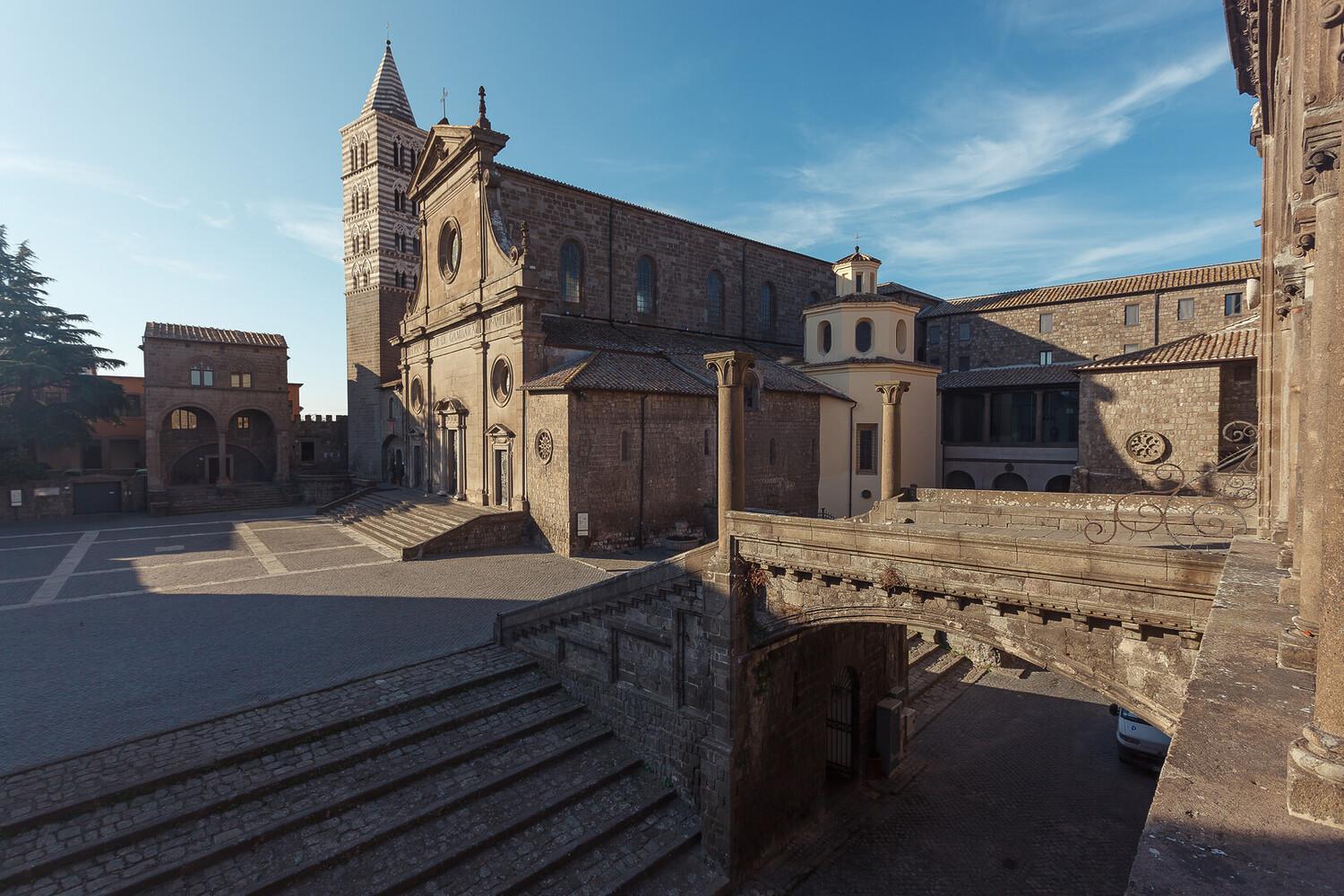
Right next to the Palazzo dei Papi, in the heart of Piazza San Lorenzo, you’ll find the Cattedrale di San Lorenzo, Viterbo’s quiet soul in stone. Originally built in the 12th century and later revamped with Baroque touches, this cathedral blends Romanesque charm with Renaissance elegance. Step inside for a moment of calm, where cool marble floors and golden altars whisper stories of medieval faith and power.
Wander through the San Pellegrino district
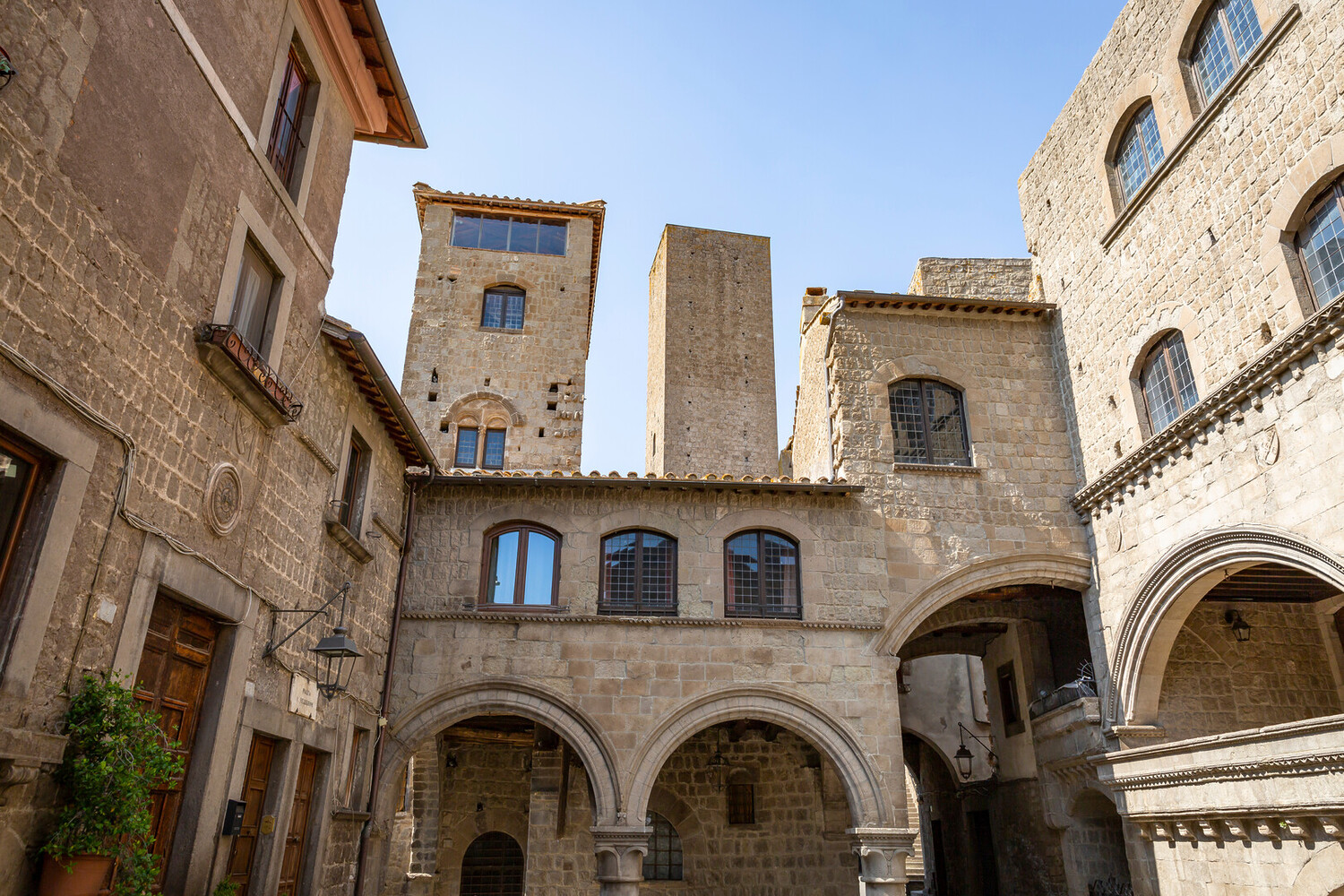
This old quarter is all stone buildings, narrow alleys, and quiet courtyards where daily life hums at its own pace. It’s one of the largest medieval neighborhoods still intact in Europe, but it doesn’t feel like a museum, people live here, work here, eat here. You’ll find small restaurants serving local pork dishes, wine bars pouring glasses from nearby Lazio wineries, and independent artisans keeping old trades alive.
Marvel at the Fountain in Piazza della Morte
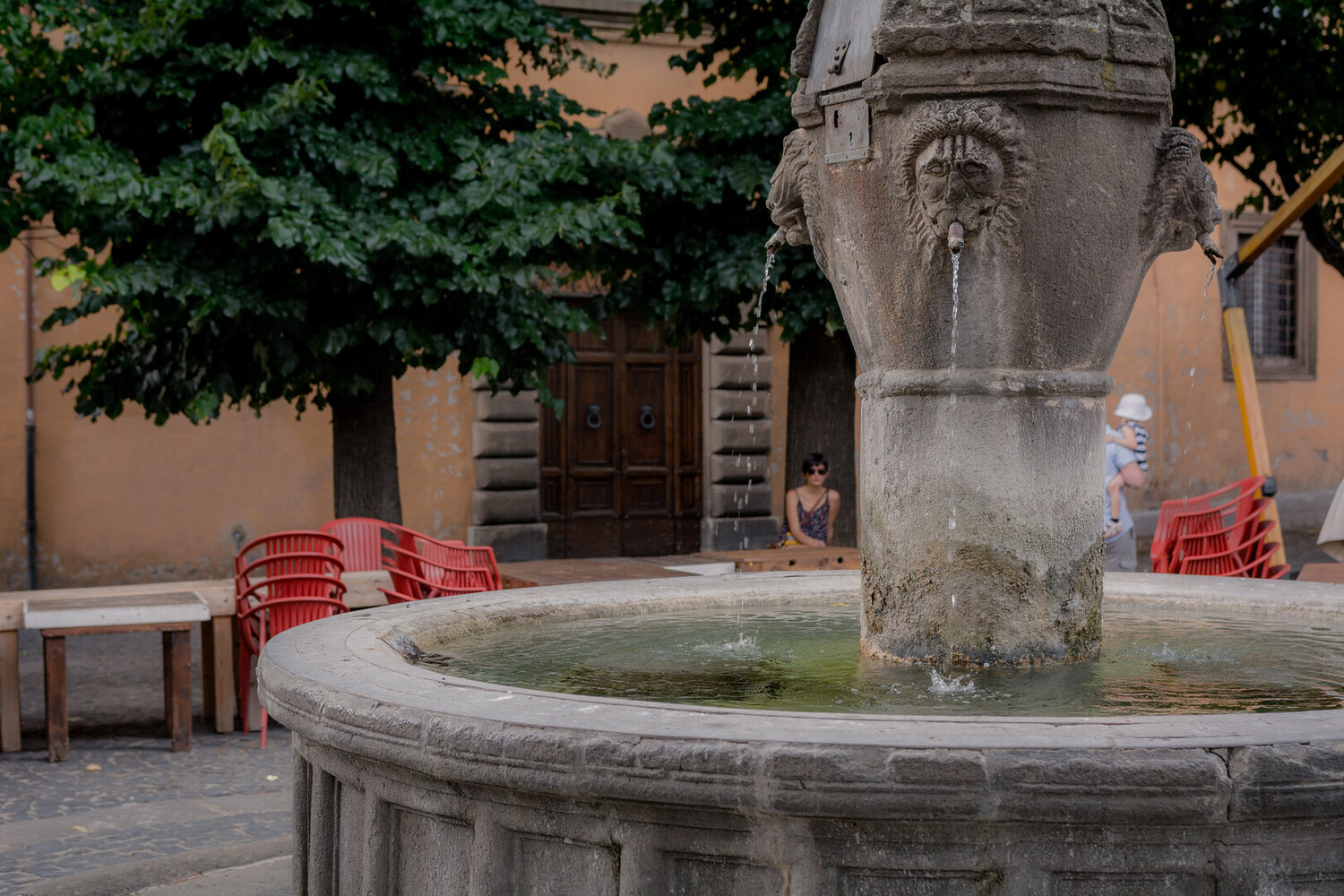
Piazza della Morte is one of those spots in Viterbo that hits differently. Tucked away from the busy streets, it’s all worn stone, quiet corners, and just enough mystery to keep things interesting. Despite the ominous name, it’s a chill place to grab a coffee or an early evening drink. Locals hang out, conversations echo off the medieval walls, and the old fountain gurgles in the background.
Visit the Palazzo dei Priori and Piazza del Plebiscito
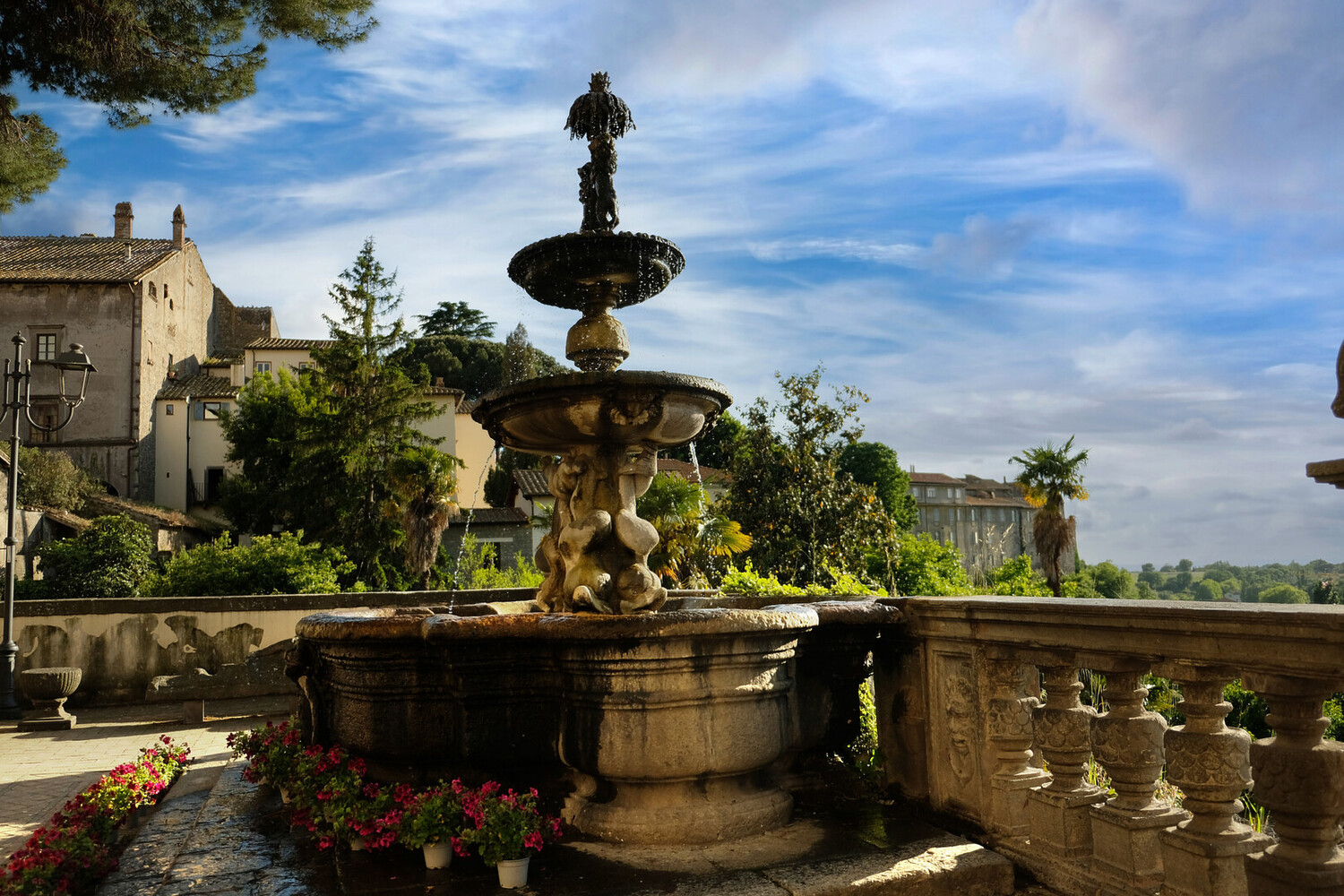
Right in the heart of Viterbo, the Palazzo dei Priori stands with the kind of quiet authority only centuries can give. Built in the 1200s, it’s more than just a backdrop, step inside and you’ll find massive halls, faded frescoes, and the kind of historic weight that sticks with you. Out front, Piazza del Plebiscito is where the real life happens, locals catching up, kids darting through pigeons, the buzz of a town that knows its rhythms.
Best things to do around Viterbo
Wander through the gardens of Villa Lante in Bagnaia
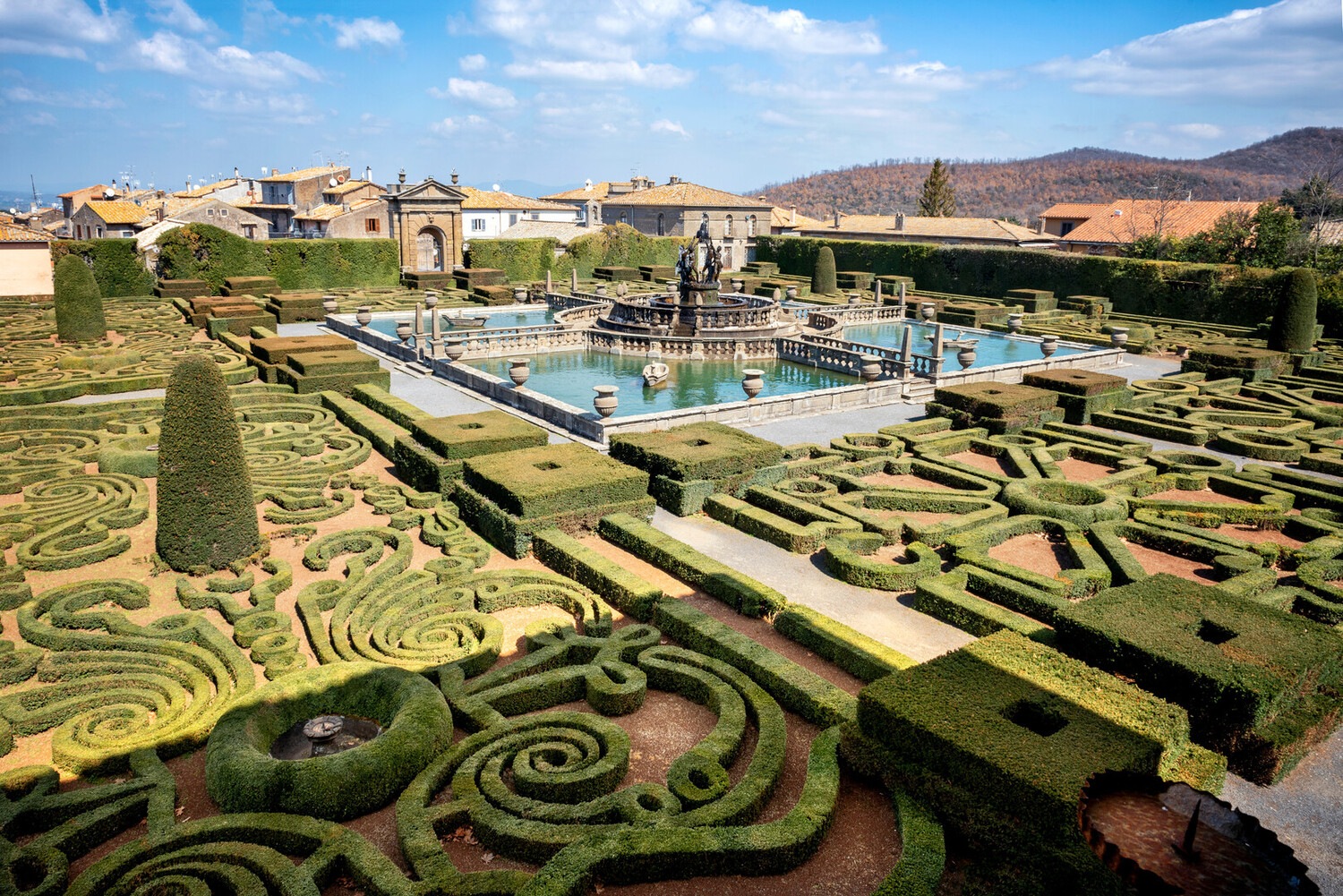
Just a 10-minute drive from Viterbo, Villa Lante in Bagnaia is where nature and Renaissance art strike a perfect balance. The gardens are the real star, think cascading fountains, mossy sculptures, and stone paths framed by tall cypress trees. It’s the kind of place that slows you down in the best way. Originally designed for powerful cardinals, the villa’s symmetry and quiet elegance make it ideal for a peaceful afternoon away from the city buzz.
Explore the surreal park of the monsters in Bomarzo
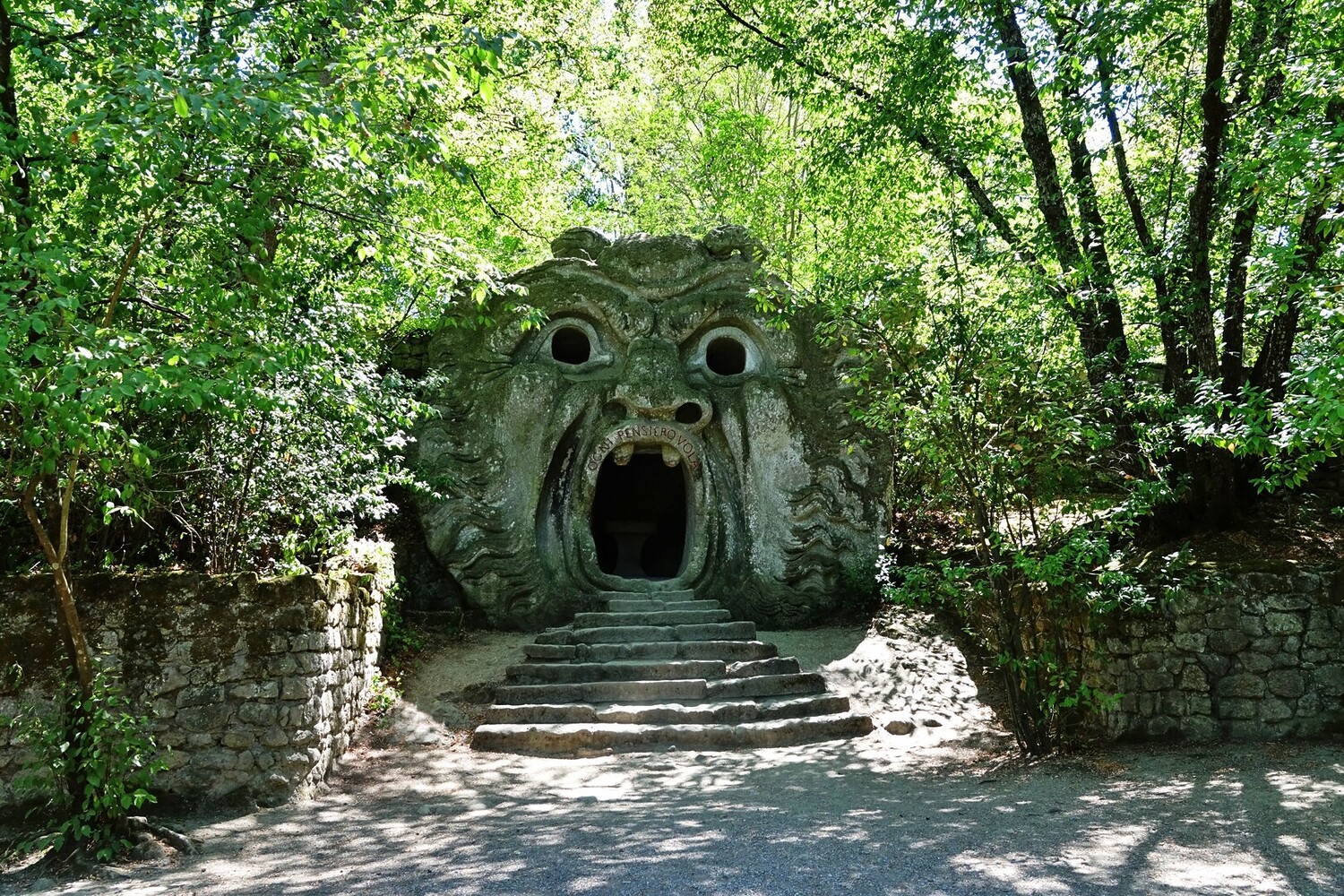
23 minutes drive from Viterbo, Bomarzo’s Parco dei Mostri is unlike anything else in Italy. Giant stone monsters, mythic creatures, and surreal sculptures wait for you in this offbeat 16th-century garden, part fantasy, part mystery. Created by Prince Orsini as a tribute to love and loss, it’s a place where you don’t just walk, you wonder. It’s perfect for a quirky afternoon trip, especially if you’re traveling with kids or just want something weird and wonderful.
Experience historical depth in Soriano nel Cimino
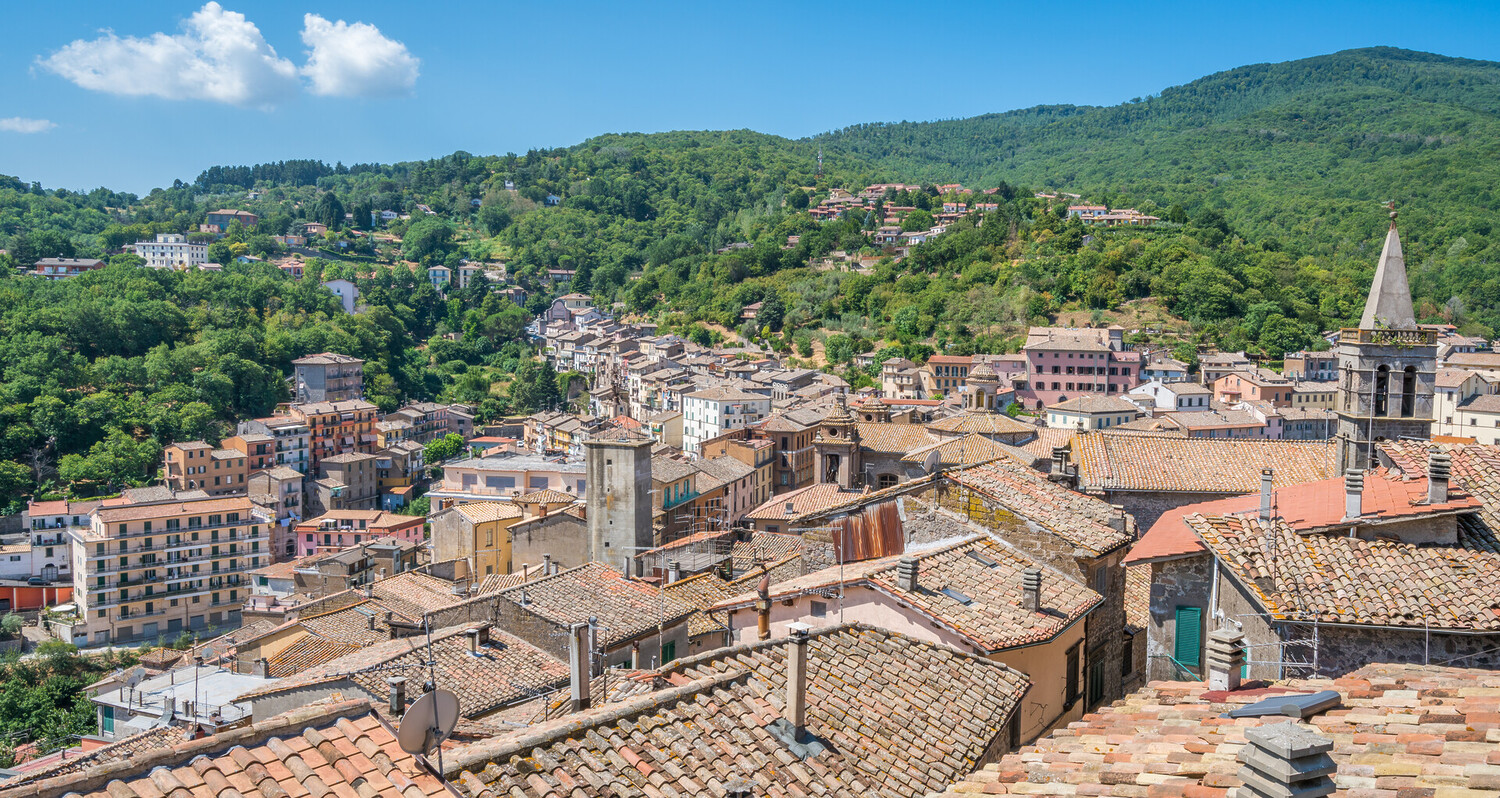
Tucked into the chestnut-covered hills just 25 minutes from Viterbo welcome in Soriano nel Cimino. Between its quiet archways and weathered palazzi, you’ll stumble on local cafés that still serve biscuits from grandma’s recipe and views that stretch deep into the Tuscia countryside. The Orsini Fortress stands tall above it all, once a cardinal’s playground, now a museum packed with stories.
Visit the village of Civita di Bagnoregio
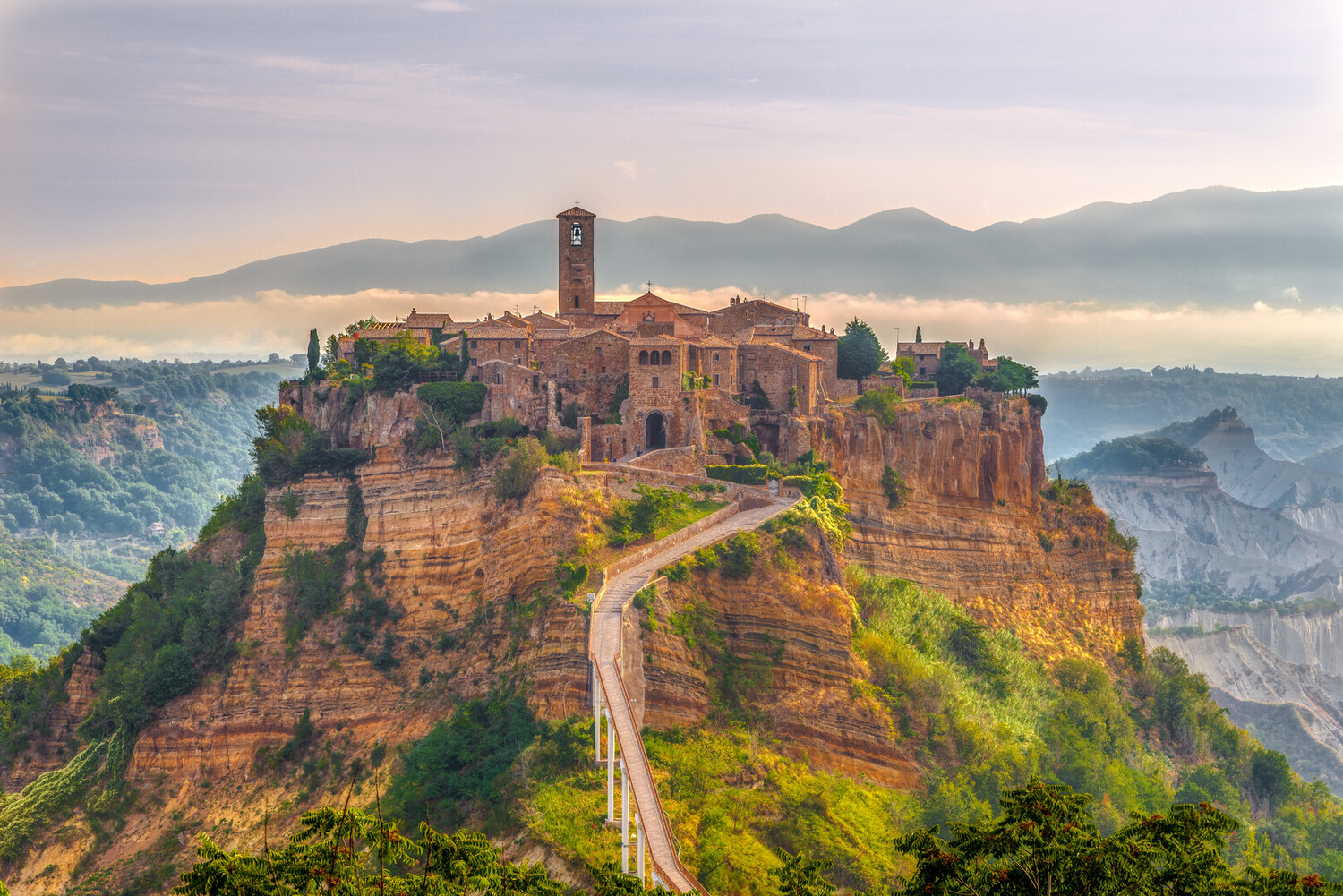
Just 40 minutes northeast of Viterbo, Civita di Bagnoregio isn’t just a town, it’s a moment suspended in time. Rising like a mirage from the Tiber Valley, this fragile hilltop beauty is known as La città che muore (“The Dying City”), but there’s nothing lifeless about it. Reachable only by footbridge, Civita greets you with stone archways, flower-draped windows, and alleyways that haven’t changed in centuries. The views? Unreal. The pace? Wonderfully slow.
Ready to fall under its spell? Then don’t miss our full guide to visit Civita di Bagnoregio.
Sip the best of the region

Azienda Agricola Palazzone is a family-run winery where tradition and taste come together. Set on ancient volcanic hills, this peaceful estate is known for its Orvieto Classico wines and other local favorites. You can stop by for a short tasting of white and red wines, or go for the full experience with a vineyard walk, cellar visit, and guided tasting of four wines. Friendly hosts serve up delicious local snacks like cheese and cured meats alongside the wine. If you’re in the Orvieto area and love good wine, this is a must-visit spot.
Good to know before visiting Viterbo
Is Viterbo worth visiting?
Absolutely! Viterbo is a hidden gem in the Lazio region, rich with medieval charm, thermal baths, and historical architecture. Often overlooked in favor of Rome or Florence, Viterbo offers a more intimate experience with fewer crowds, making it ideal for travelers seeking authentic Italian culture, history, and gastronomy. Its well-preserved medieval center, known as San Pellegrino, is one of the best in Italy.
What is Viterbo famous for?
Viterbo is best known for its medieval old town, the Papal Palace (Palazzo dei Papi), one of the first papal residences outside Rome, and its rejuvenating thermal baths. It also hosts the “Macchina di Santa Rosa,” a UNESCO-recognized religious procession featuring a massive illuminated tower carried through the city each September.
What are the must-see attractions in Viterbo?
Top things to do in Viterbo include:
- Papal Palace (Palazzo dei Papi) – Explore the gothic architecture and papal history.
- Cathedral of San Lorenzo – Adjacent to the palace and filled with art and sacred relics.
- Quartiere San Pellegrino – Wander cobblestone streets and admire medieval towers and arches.
- Terme dei Papi – Relax at natural hot springs used since Roman times.
- Villa Lante in nearby Bagnaia – A stunning Renaissance garden that’s a favorite for photo-lovers.
What does Viterbo mean in English?
The name “Viterbo” is believed to derive from the Latin “Vetus Urbs,” meaning “Old City.” This is fitting considering the town’s ancient origins, dating back to Etruscan civilization and flourishing throughout the medieval period.
What are the best hotels in Viterbo?
Viterbo offers a range of accommodations, from historic guesthouses to modern spa hotels. Some recommended options include:
- Hotel Palazzo Riario – Located in the heart of the historic center, a blend of classic charm and comfort.
- Mini Palace Hotel – A 4-star modern hotel offering spacious rooms and excellent service.
- Alla Corte delle Terme Resort – Ideal for spa lovers, just outside the city with direct access to the thermal area.
- B&B Viterbo Antica – Budget-friendly and cozy, steps from San Pellegrino district.
What are the best restaurants in Viterbo?
Viterbo’s cuisine reflects traditional Lazio and Tuscia influences. Don’t miss local dishes like “Acquacotta” and “Fieno di Canepina.” Recommended restaurants include:
- Hostaria Lo Spito – A rustic eatery serving authentic Viterbese dishes in a cozy atmosphere.Il Richiastro – Located in San Pellegrino, this trattoria offers local specialties with a modern twist.Trattoria L’Archetto – A favorite for its casual style and traditional fare like wild boar and truffle pasta.
When is the best time to visit Viterbo?
The best time to visit is from late spring to early fall (May to September) when the weather is pleasant and numerous festivals take place. Early September, in particular, is ideal if you want to witness the Macchina di Santa Rosa celebration. Winters can be chilly, but are quiet and atmospheric for those seeking a peaceful retreat.
How can I get to Viterbo from Rome?
You can reach Viterbo by train from Rome in about 2 hours. Take the regional train from Roma Ostiense or Roma San Pietro stations with a change in Orte or directly via the Roma-Viterbo railway. By car, it’s a 1.5-hour drive north on the A1 or SS2 highway. Buses are also an option but less frequent.
Is Viterbo a good base for exploring the surrounding area?
Yes, Viterbo is an excellent base for exploring Lazio and parts of Umbria and Tuscany. From here, you can easily take day trips to:
- Civita di Bagnoregio – A spectacular clifftop village known as “the dying town.”
- Lake Bolsena – Perfect for swimming, boating, and lakeside dining.
- Tarquinia – A UNESCO World Heritage Site famous for its Etruscan tombs and museum.
- Orvieto – A historic Umbrian city with incredible cathedral and wine culture.
What local products should I try or buy in Viterbo?
Viterbo is known for high-quality olive oil, truffles (especially black truffles), hazelnuts, and chestnuts. Local wines from the Tuscia region are also worth tasting. Traditional ceramics and handmade crafts can be found in artisan shops around the old town, making perfect souvenirs.


